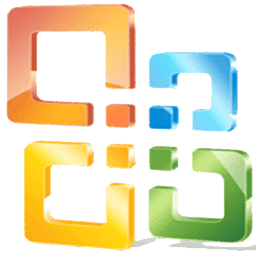In the ever-evolving landscape of office productivity software, Microsoft Office has been a stalwart, consistently setting industry standards. Microsoft Office 2007, a pivotal release in the suite’s history, introduced a revolutionary change—the Ribbon interface. In this blog, we’ll explore the transformative impact of Microsoft Office 2007, highlighting the key features and design innovations that reshaped the way users interact with Word, Excel, PowerPoint, and other applications.
I. The Ribbon Interface: A Paradigm Shift:
- Introduction of the Ribbon: Microsoft Office 2007 bid farewell to traditional menus and toolbars, introducing the Ribbon—a dynamic and visually intuitive interface that organized commands into tabs and groups. This shift aimed to make features more discoverable and accessible to users.
- Tab-Based Organization: The Ribbon organized commands into context-specific tabs, such as “Home,” “Insert,” “Page Layout,” and more. Each tab housed related functions, providing a streamlined and logical structure that aligned with common user workflows.
- Live Preview and Contextual Galleries: Office 2007 brought forth the concept of Live Preview, allowing users to hover over formatting options to preview changes before applying them. Contextual Galleries provided visual representations of formatting choices, enhancing the user experience.
II. Application-Specific Enhancements:
- Microsoft Word 2007:
- Quick Styles and Themes: Word 2007 introduced Quick Styles and Themes, enabling users to apply consistent formatting to documents effortlessly.
- SmartArt Graphics: The inclusion of SmartArt allowed for the creation of visually engaging diagrams and graphics directly within Word.
- Microsoft Excel 2007:
- New Formulas and Functions: Excel 2007 expanded its repertoire of formulas and functions, enhancing data analysis capabilities.
- Conditional Formatting Improvements: The Ribbon made it easier to apply and customize conditional formatting, improving data visualization.
- Microsoft PowerPoint 2007:
- Slide Master View: PowerPoint 2007 introduced the Slide Master view, streamlining the process of designing and formatting presentation layouts.
- SmartArt and Visual Enhancements: Similar to Word, PowerPoint embraced SmartArt for dynamic visual representations, elevating the quality of presentations.
- Outlook 2007 and Beyond:
- To-Do Bar and Instant Search: Outlook 2007 introduced the To-Do Bar for managing tasks and integrated Instant Search for efficient email retrieval.
- Calendar Improvements: Calendar features were enhanced, providing a more organized and user-friendly scheduling experience.
III. Collaboration and Integration:
- Office Open XML (OOXML) Format: Microsoft Office 2007 adopted the Office Open XML format, promoting compatibility, improved data recovery, and enhanced document security.
- Integration with SharePoint: Enhanced integration with SharePoint facilitated collaborative work environments. Users could share, access, and collaborate on documents seamlessly.
IV. Learning Curve and User Reception:
- Adjustment Period: The introduction of the Ribbon interface, while innovative, required users to adapt to a new way of interacting with Office applications. Microsoft provided training resources to ease the transition.
- Positive Reception: Over time, users came to appreciate the streamlined design and increased functionality offered by Microsoft Office 2007. The Ribbon interface received positive feedback for its efficiency and improved usability.
V. Legacy and Continued Impact:
- Enduring Influence: The Ribbon interface introduced in Office 2007 left a lasting impact, becoming a hallmark of subsequent Microsoft Office versions. Its principles of organization and visual clarity continue to shape modern user interface design.
- Ongoing Evolution: Microsoft Office has evolved further with subsequent releases, incorporating cloud integration, real-time collaboration, and additional features while retaining the foundational design concepts introduced in Office 2007.
VI. Conclusion:
Microsoft Office 2007 stands as a pivotal release that transformed the way users interact with productivity software. The introduction of the Ribbon interface redefined the user experience, making features more accessible and empowering users to create professional documents, presentations, and spreadsheets with greater efficiency. As a landmark in the evolution of office productivity tools, Microsoft Office 2007 continues to influence how we approach digital work in the modern era.
